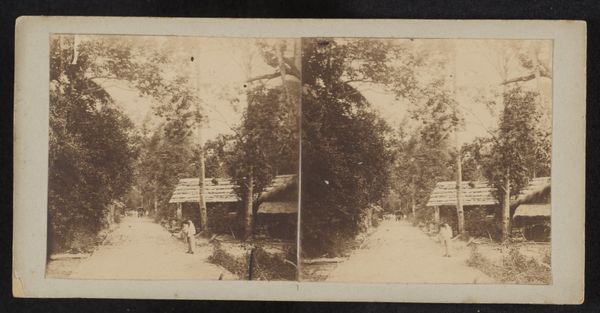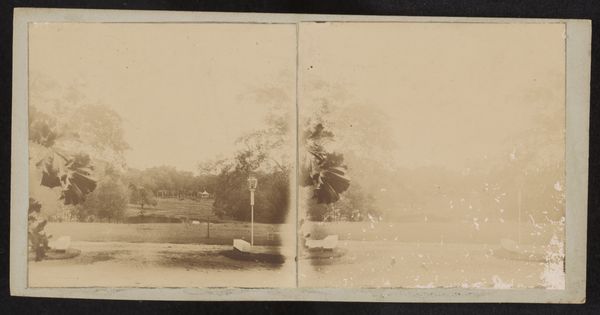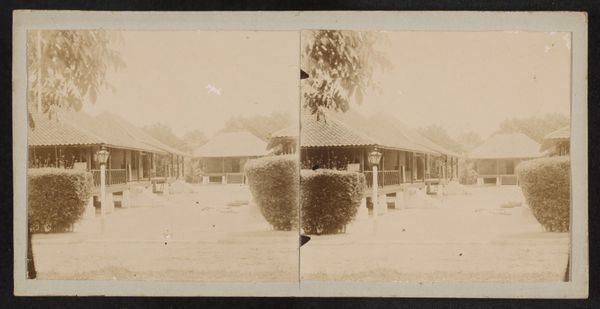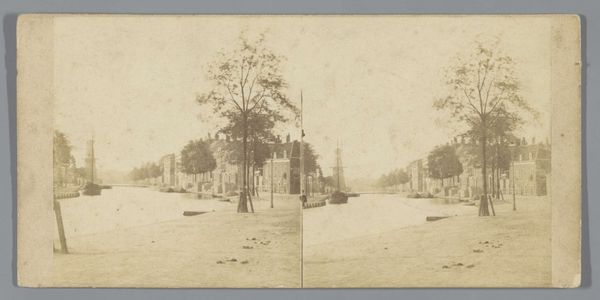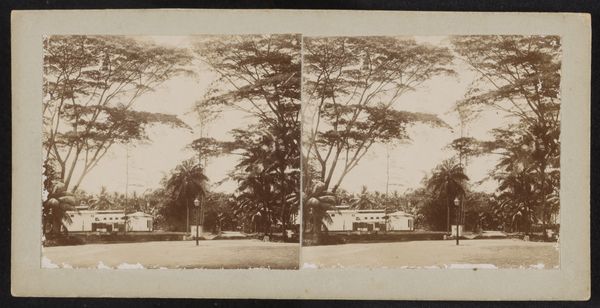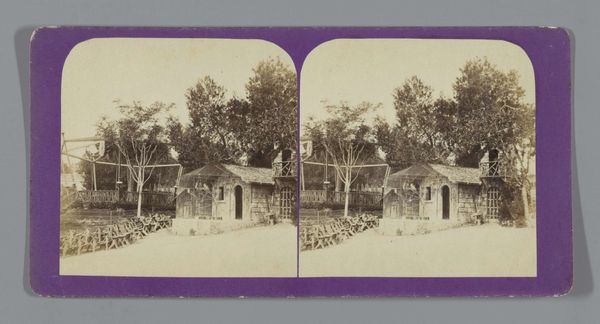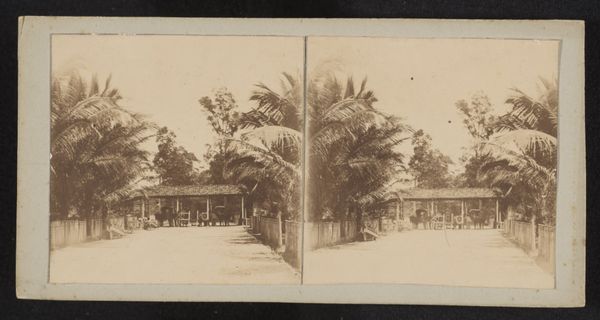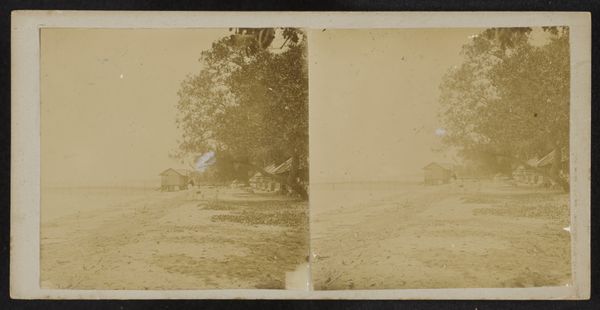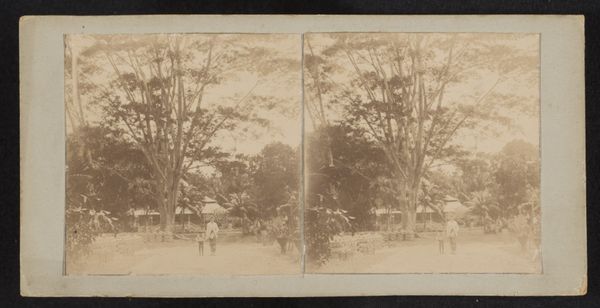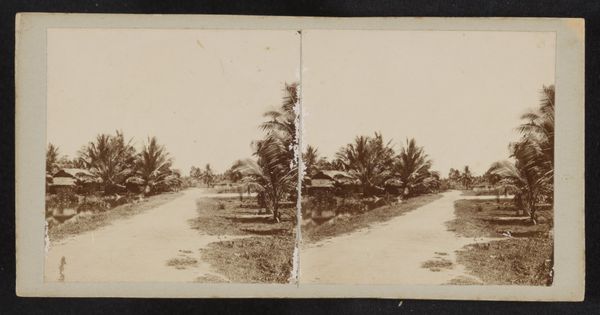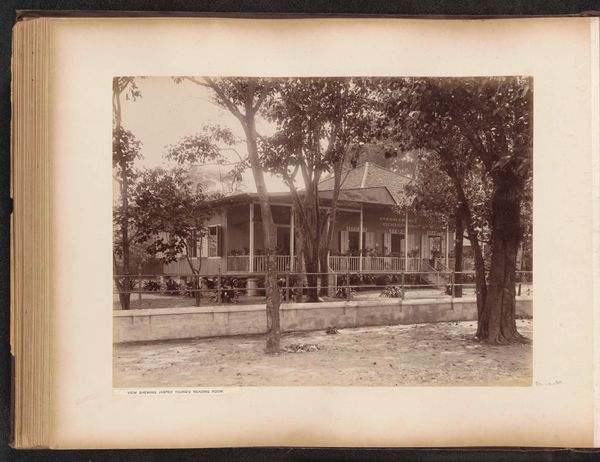
photography, albumen-print
#
photography
#
cityscape
#
street
#
albumen-print
Dimensions: height 84 mm, width 174 mm
Copyright: Rijks Museum: Open Domain
Curator: Pieter Oosterhuis captured this scene, “Straat met bomen in Scheveningen,” sometime between 1859 and 1865. It’s an albumen print currently held at the Rijksmuseum. Editor: There’s a peculiar quietness to this image, an emptiness. The sepia tones only amplify the sense of something missing, of stories untold. The buildings look uninhabited and all the vegetation is motionless. Curator: The symbolism of streets is quite interesting. They’re not simply pathways, but visual signifiers of social order, movement, and the spaces between public and private life. Notice how Oosterhuis has framed the trees along the road like guardians to the thresholds of the houses on either side, representing roots and stability. Editor: Thresholds, exactly! I see them as demarcations of power. The starkness of the photograph speaks to the class divisions of the time. The architecture hints at wealth and privilege, perhaps standing in sharp contrast to the lives of the working class of Scheveningen. Curator: Perhaps, but I think the image invites us to look more closely. Oosterhuis has used the very latest photographic technology to document his time, and this medium carries connotations of accuracy and objectivity, an invitation to remember and revere his scene. Note the symmetry here too. See how the buildings and trees create visual echoes. That strengthens the feeling of serenity, don't you think? Editor: I disagree. Photography, even then, was never truly objective. The framing, the perspective, the very act of choosing what to capture is a statement in itself. I suspect these aesthetic choices sanitize and gloss over social tensions prevalent at the time. Curator: So, what would you want viewers to take away from this work then? Editor: An acknowledgement that every picture, every seemingly simple snapshot, carries with it a complex web of history, power, and social context. We have to be critical and interrogate what's shown, but also what is strategically left out of the picture. Curator: And, for me, a photograph such as this asks us to connect to something beyond the immediate. Perhaps to consider the collective memory ingrained within our physical environments. It's there within the roots of the trees or the stones laid to form a road.
Comments
No comments
Be the first to comment and join the conversation on the ultimate creative platform.
